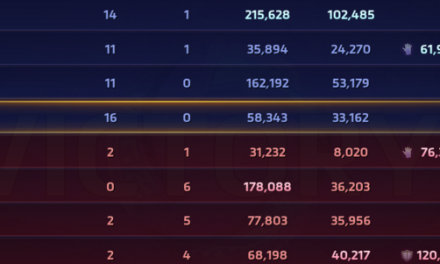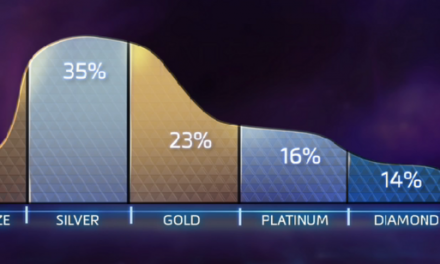Of the mages available to play in Heroes of the Storm, Kael’thas the blood elf is among the most popular, showing up in almost 75% of professional and amateur matches. Though he has very few hit points, his capacity to control the arena and dish out sustained damage makes him a potent and terrifying threat. Though the different talents and build options available in HOTS provide a dizzying amount of variety, realistically there are two specific builds I see players focus on when they play Kael’thas, and today I explore the strengths and weaknesses of both.
Flamestrike / Convection
A very popular talent which is both the boon and bane of many teams, Convection increases Kael’thas’ flamestrike damage every time he hits opposing heroes, stacking up to 20 times. At 20 hits this bonus damage is doubled, making flamestrike a truly terrifying melter of enemy teams. The only catch is that Convection’s bonus is lost if Kael’thas dies before reaching 20 hits. Though smart teams often target enemy mages, if a player takes Convection they can be sure that they will be the primary target of every skirmish.
Because they will be the focus of so much offensive output, and the risks of dying are severe (losing any progress made toward completing Convection), many players of Kael’thas will have almost anemic damage in the first third of a match, poking the enemy team just enough to slowly increase their hits with flamestrike, without putting themselves at risk. They will play extra-cautiously, which can make for a frustrating experience for their teammates, who may expect a more zealous offense from their back-line.
When taking Convection, many later talents are all but chosen, due to the high level of synergy. At level 7 “Burned Flesh” is a given, which deals additional damage should a flamestrike hit multiple foes. Since the goal of a Convection build is to hit as many targets as possible, and once the quest is complete it does huge amounts of damage, this talent is a great way to really ramp up the damage output. At level 16 “Fury of the Sunwell” makes flamestrike hit twice for every cast, allowing for sustained territory control and/or truly horrific damage against stunned or rooted foes.
Convection is a good option when playing on maps where holding chokepoints is vital for success, such as Cursed Hollow and Garden of Terror (keeping the enemy from interrupting a point capture), or when the opposing team does not have much maneuverability—characters like Hanzo and Genji will simply flip out of harm’s way while Anub’arak and Alarak will reposition themselves before the strike hits.
Living Bomb
A favorite for those who prefer single-lane brawl maps, the Living Bomb build capitalizes on talents which increase the damage done when living bomb spreads to new targets. Because living bomb requires multiple enemy heroes to be grouped together to be effective, this is not an effective strategy when it comes to maps that emphasize solo play such as Warhead Junction. Nor should this build be taken when—for example in a brawl—there is more than one Kael’thas on the same team. A living bomb cannot be placed on a character already affected by living bomb, which all but cripples a team where both mages are focused in this direction.
Moreso than the Flamestrike build, there are specific talents which truly define those wishing to spread ruin and destruction through mastery of living bomb. At level 7 players take “Sun King’s Fury” which does increased damage with secondary living bomb explosions, meaning tightly-packed groups are all but shredded with a single bomb. At level 13 the talent “Pyromaniac” should be taken, decreasing all of Kael’thas’ cooldowns any time living bomb hurts an enemy, including the cooldown for living bomb itself. The level 16 talent of “Ignite” means heroes caught in a flamestrike are also struck with living bomb, and the pièce de résistance comes at level 20 with “Master of Flames,” which causes living bomb to spread forever, each blast benefiting from the level 7 talent damage bonus.
Kael’thas’ special ability of verdant spheres both removes the mana cost and the cooldown from a single casting of living bomb, meaning he can lay two bombs in quick succession if the opportunity arises. If targets aren’t available, cautious use of verdant spheres means that Kael’thas will functionally never use mana for living bomb, saving his precious spellcasting power for territory control or initiation (flamestrike and gravity lapse, respectively).
On maps where players must or often group up in tight corridors or to complete objectives, particularly Tomb of the Spider Queen and Sky Temple, a properly-targeted living bomb can wreck havoc through the enemy team. As players group up for healing (Alexstraza, Auriel) or in defense of a keep, living bombs absolutely bring Kael’thas to the top of the damage charts.
















